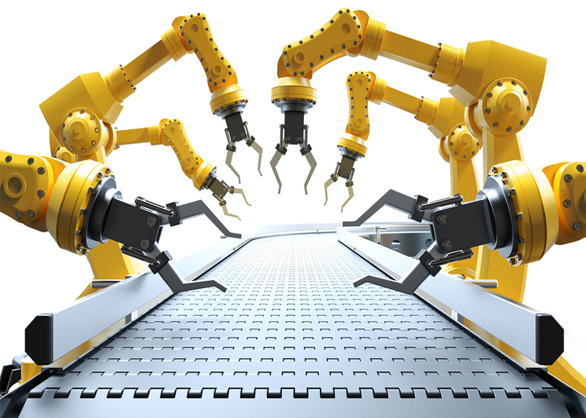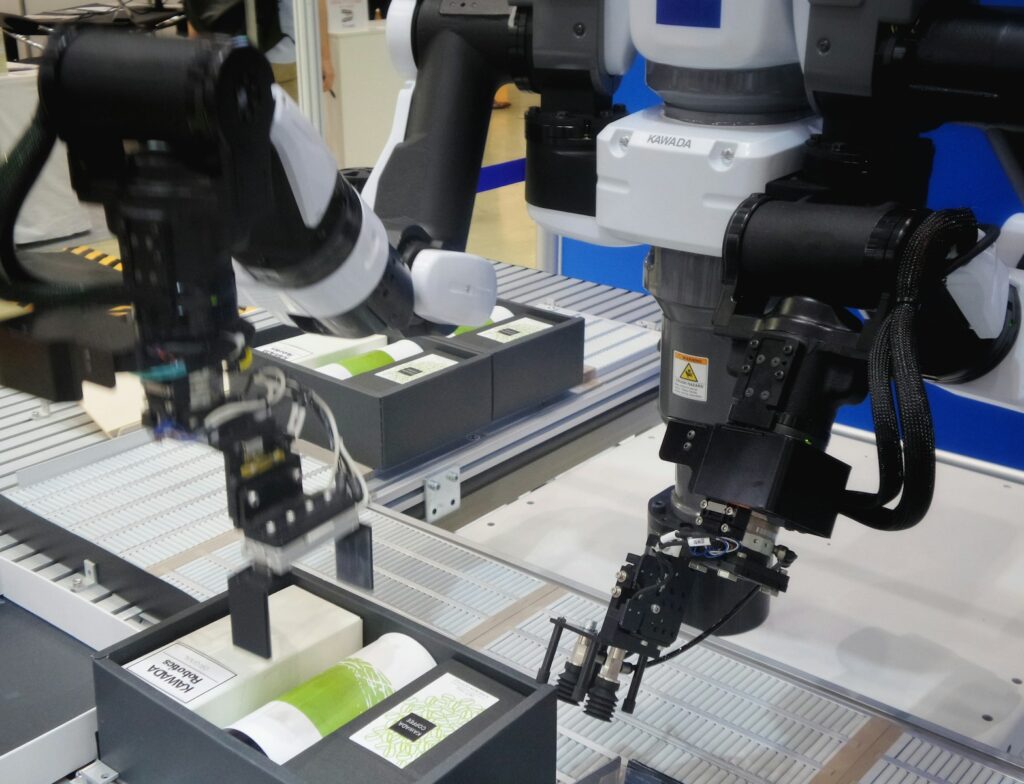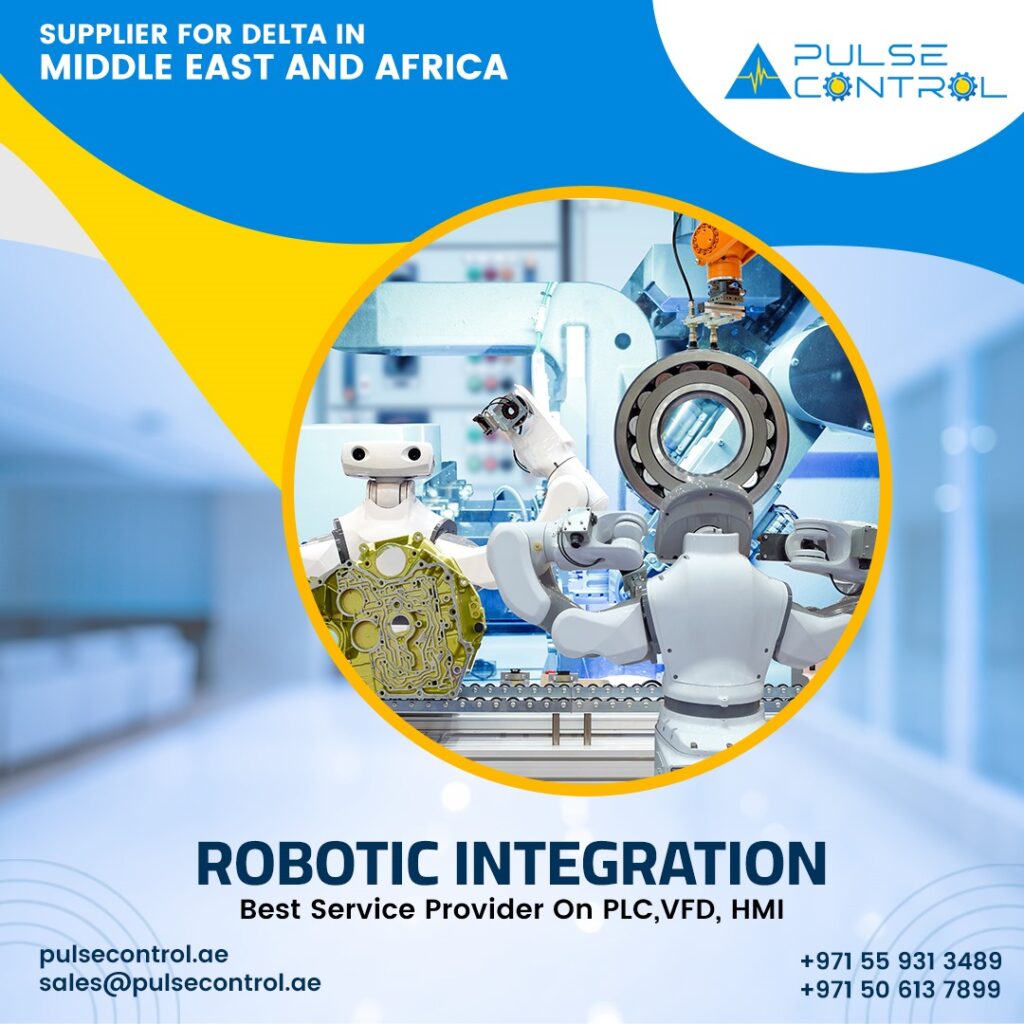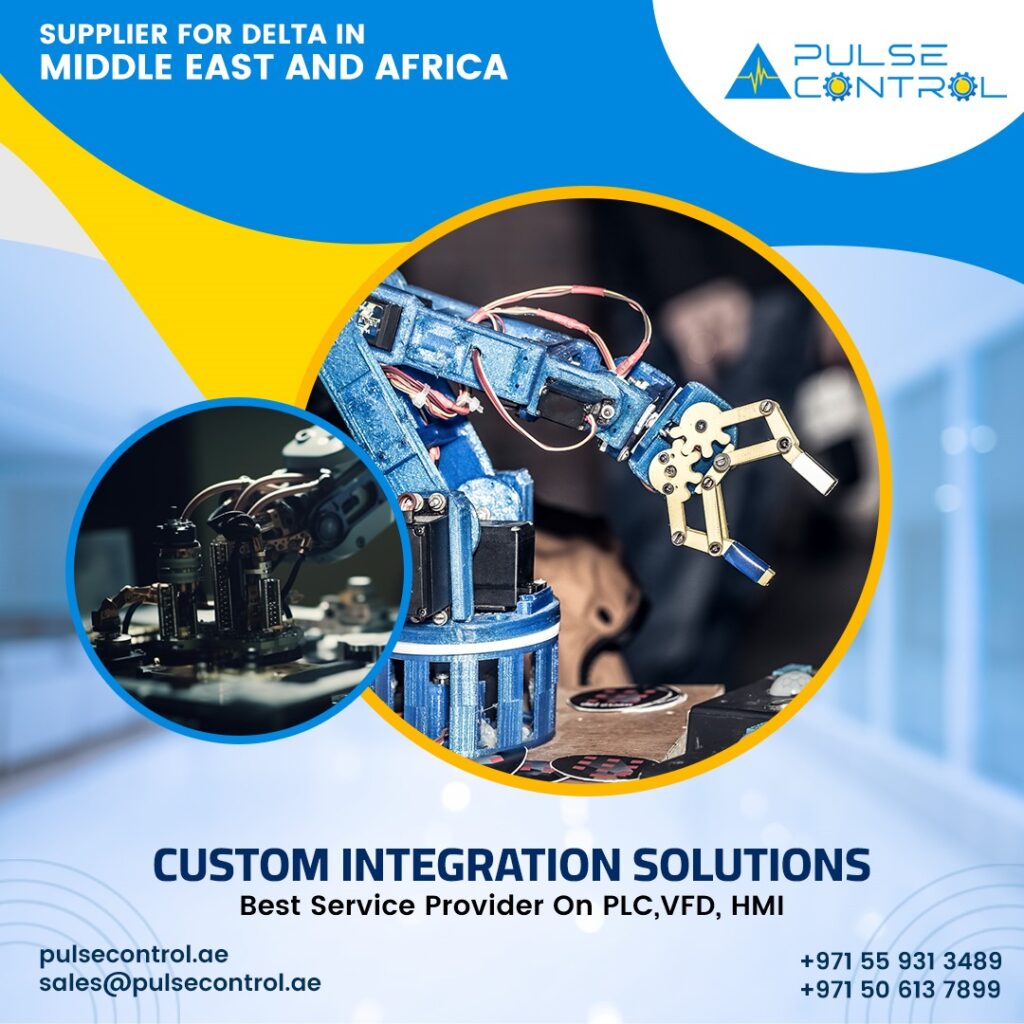
Unlocking the Power of Automation: Robotic Integration Services by Pulse Control
Pulse Control’s Robotic Integration Process
Pulse Control’s expertise in robotic integration positions businesses to embrace automation, improving operations, and staying competitive in an increasingly technology-driven world.
Consultation and Planning: Pulse Control begins by conducting a detailed assessment of your operational needs. They analyze existing processes, identify bottlenecks, and recommend the best robotic solutions tailored to your business.
Custom System Design: Based on the assessment, Pulse Control designs a custom robotic system that integrates seamlessly with your production environment. This may include selecting robotic arms, end-effectors (tools), and integrating with existing automation systems.
Installation and Integration: Pulse Control’s experts handle the installation of robotic systems, ensuring minimal disruption to ongoing operations. The integration process includes connecting robots with other equipment, ensuring they communicate effectively and function as part of a larger automation system.
Programming and Testing: The company also programs the robotic systems to perform specific tasks, from material handling to precision assembly. Extensive testing is done to verify that all systems function efficiently, reliably, and safely.
Training and Ongoing Support: Pulse Control provides training for your team to ensure they can operate and maintain the robots. Additionally, ongoing support services, including system monitoring, maintenance, and updates, ensure long-term efficiency and optimization.
Continuous Improvement: As your business evolves, Pulse Control helps scale and upgrade the robotic systems to meet new demands or integrate emerging technologies like AI and machine learning.
The relevance of robotic integration and its services in today’s industries cannot be overstated. As industries around the world evolve, automation, powered by robotic integration, has emerged as a key driver of efficiency, innovation, and growth. The application of robotics in various sectors offers profound advantages, including improved productivity, enhanced precision, cost reduction, and the ability to tackle complex tasks that would be difficult or dangerous for humans to perform.
1. Enhancing Operational Efficiency and Productivity
One of the most compelling reasons for integrating robotics into industrial processes is the significant boost in efficiency and productivity it provides. Robots can perform repetitive tasks with consistent precision and without the need for breaks, making them far more efficient than human workers. Whether it’s in manufacturing, packaging, or assembly lines, robots can work 24/7, reducing cycle times and increasing throughput. This efficiency results in faster production rates, which directly impacts the bottom line by increasing the amount of goods produced in a given timeframe, reducing lead times, and improving supply chain management.
For example, in the automotive industry, robots are widely used for tasks like welding, painting, and assembly. These robots can operate at a much faster pace and with a higher degree of accuracy than human workers, leading to a smoother and more efficient production process. Robotics also contributes to minimizing human errors, which can lead to costly defects or rework.
2. Improving Quality and Precision
Another critical aspect of robotic integration is the enhanced quality and precision that robots bring to various tasks. Robots can be programmed to execute highly intricate and detailed operations with a level of consistency that is hard for humans to match. This level of precision ensures that products are made to exact specifications, reducing the risk of defects, improving product consistency, and enhancing customer satisfaction.
In industries like electronics manufacturing, where precision is paramount, robots can assemble tiny components or test circuit boards with extremely high accuracy. Similarly, in healthcare, robotic surgical systems have revolutionized surgeries by offering greater precision than traditional methods. These systems reduce the margin for human error, allowing for less invasive procedures, quicker recovery times, and improved patient outcomes.
3. Addressing Labor Shortages and Reducing Workplace Hazards
In many sectors, there is a growing concern about labor shortages, particularly in manufacturing and agriculture, where repetitive, physically demanding work is required. Robotic integration helps mitigate this issue by taking over the manual, repetitive, and often hazardous tasks that would otherwise require human labor. Robots can handle dangerous environments, such as high heat, toxic substances, or hazardous machinery, reducing the risk of workplace accidents and improving overall safety.
For example, in the mining industry, robots are used to explore dangerous or hard-to-reach areas, where it would be unsafe for human workers to go. Similarly, in agriculture, robots can perform tasks such as planting, weeding, and harvesting, which would typically require large amounts of manual labor. By reducing the need for humans to perform these tasks, robots not only address labor shortages but also make workplaces safer.
4. Cost Reduction and Return on Investment (ROI)
The cost benefits of robotic integration are significant, particularly in the long term. While the initial investment in robotic systems and their integration may be high, the long-term savings are considerable. Robots help reduce operational costs by increasing efficiency, reducing waste, minimizing human error, and decreasing downtime. For instance, robots can optimize production processes, reduce scrap, and lower energy consumption, all of which contribute to cost savings.
Moreover, robots can improve the predictability of maintenance needs through real-time monitoring, reducing unexpected failures and unplanned downtime, which can be costly for businesses. Predictive maintenance, enabled by robotic systems, allows companies to identify potential issues before they become major problems, reducing repair costs and improving overall operational efficiency.
5. Versatility Across Industries
Robotic integration is not limited to just one or two industries; it spans a wide array of sectors, making it a versatile solution to various challenges. From manufacturing and logistics to healthcare, agriculture, and even entertainment, robotics is becoming increasingly integrated into the fabric of industries globally.
Healthcare: In healthcare, robots are used for surgical procedures, robotic-assisted rehabilitation, and medication management. For instance, robots are being utilized in surgeries to enhance precision and reduce recovery time for patients. Additionally, robots help in automating repetitive tasks in hospitals, like disinfection and transport, thus allowing healthcare workers to focus on patient care.
Logistics and Warehousing: In logistics, robots are used to automate inventory management, sort packages, and transport goods within warehouses. They reduce human labor, speed up processing, and improve inventory accuracy. Companies like Amazon employ robots to optimize warehouse operations, with robots moving items from storage to shipping areas, drastically reducing the time needed for order fulfillment.
Agriculture: Agricultural robots are transforming farming practices by automating tasks such as planting, crop monitoring, harvesting, and pest control. These robots increase efficiency in farming operations and help to tackle challenges like labor shortages while making farming more sustainable.
Construction: Robotics in construction is revolutionizing the way buildings are constructed. Robots can assist in 3D printing of structures, bricklaying, or welding, reducing labor costs and construction times while increasing precision and safety on worksites.
6. Customization and Flexibility
Robotic systems can be tailored to meet the specific needs of different industries and businesses. The flexibility of modern robots allows them to be adapted for a wide range of tasks, from routine operations to more complex and specialized functions. This level of customization enables companies to optimize their production lines and better meet the demands of their customers.
For instance, collaborative robots (cobots) are designed to work alongside human workers, offering greater flexibility in the types of tasks they can perform. This makes them ideal for industries where tasks are not standardized and where customization is key. Whether it’s in small-scale manufacturing or handling customized orders in retail, robots can be easily programmed and reprogrammed to suit various tasks.
7. Supporting Innovation and Future Growth
Robotic integration also plays a significant role in fostering innovation. With robots handling routine tasks, businesses can free up human employees to focus on innovation, research, and the development of new products and services. Robotics enables companies to explore new possibilities and take on more ambitious projects, accelerating their growth and allowing them to stay competitive in rapidly evolving markets.
For instance, in the field of artificial intelligence, robots that utilize machine learning are continuously evolving and improving their performance over time. By integrating these intelligent systems, businesses can create new products, refine existing offerings, and enhance customer experiences.
The relevance of robotic integration and its services in the modern world is vast and growing. From improving operational efficiency and reducing costs to enhancing product quality, addressing labor shortages, and opening the door to new innovations, the benefits of robotics are clear across various industries. As technology continues to advance, the integration of robotics will only increase, becoming an indispensable tool for companies striving for success in an increasingly competitive global market. By embracing robotic systems and their services, businesses can future-proof their operations and create a more sustainable, productive, and profitable future.
Benefits of Robotic Integration Services
- Increased Efficiency: Robots work faster and more accurately, reducing operational delays and increasing overall productivity.
- Cost Reduction: Automation reduces labor costs, errors, and waste, improving profitability in the long term.
- Enhanced Safety: Robots handle dangerous, heavy, or hazardous tasks, keeping human workers safe from injury.
- Improved Quality: Robots offer precise and repeatable performance, ensuring consistent quality.
- Flexibility: Robotic systems can be reprogrammed and reconfigured to perform a variety of tasks across different industries.





